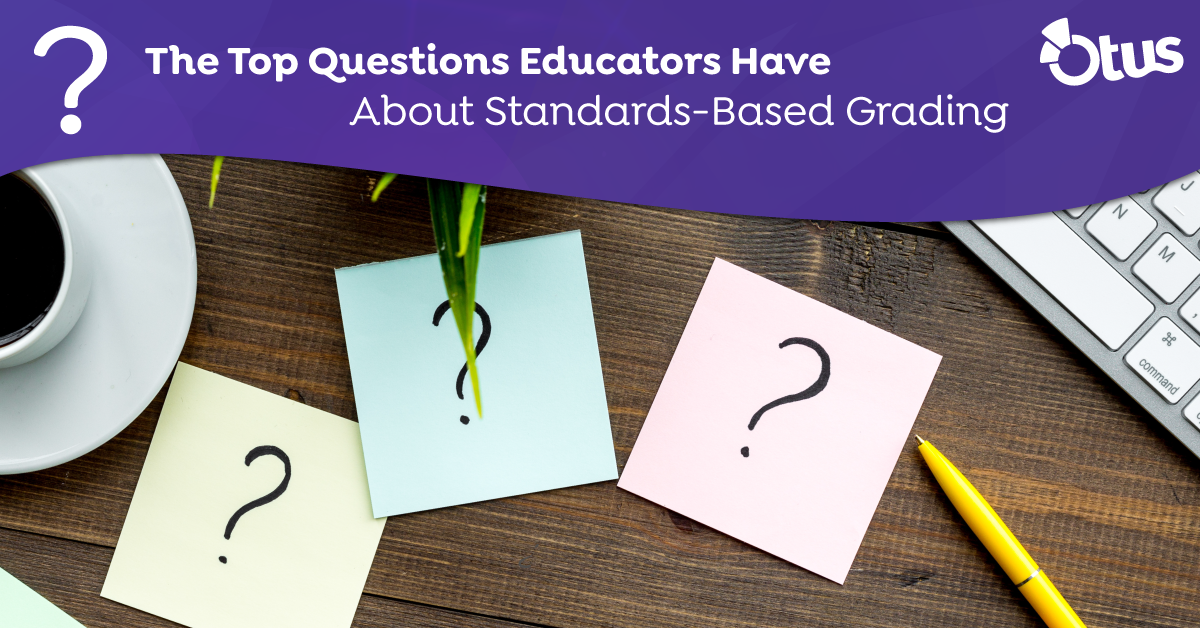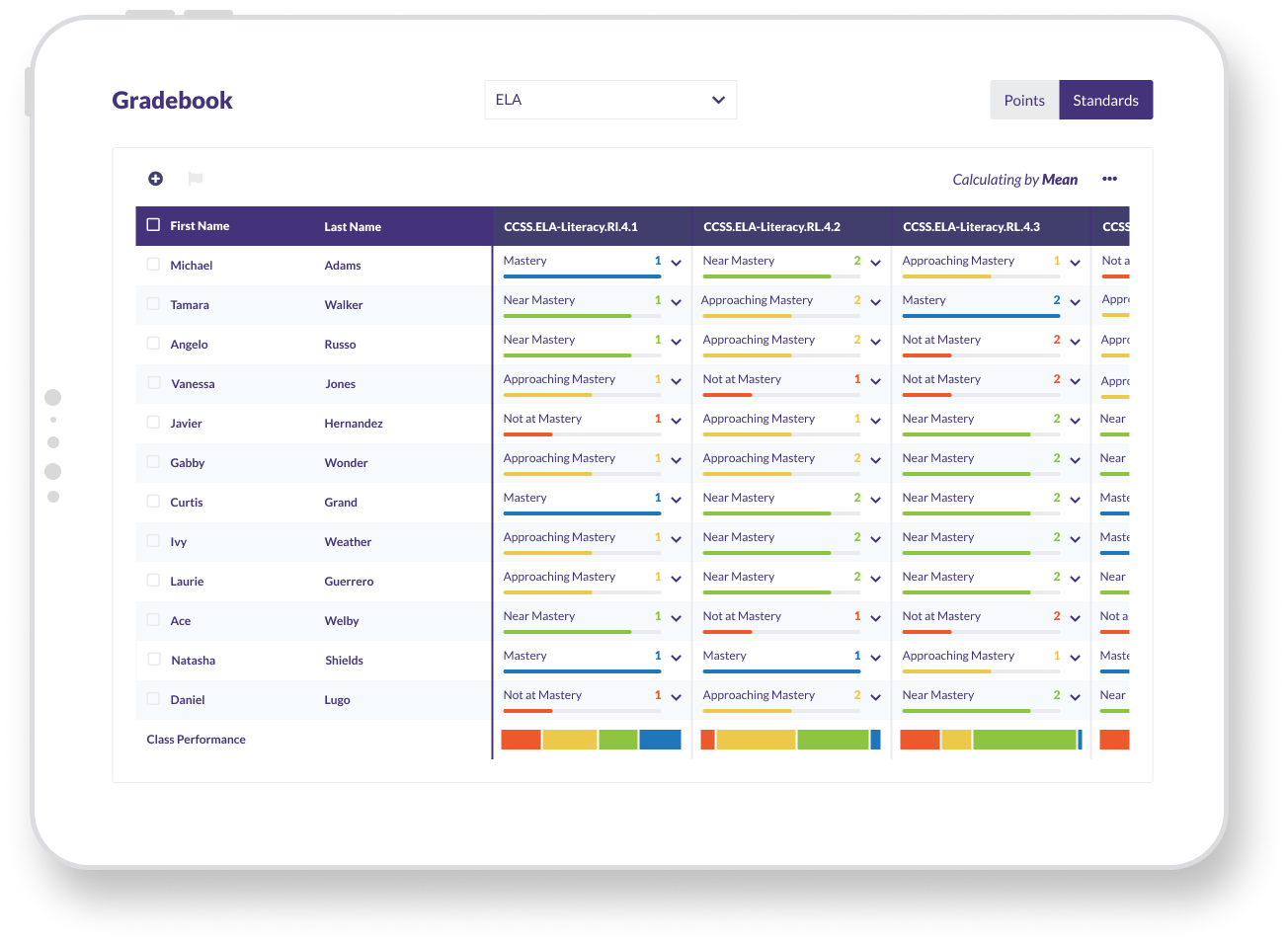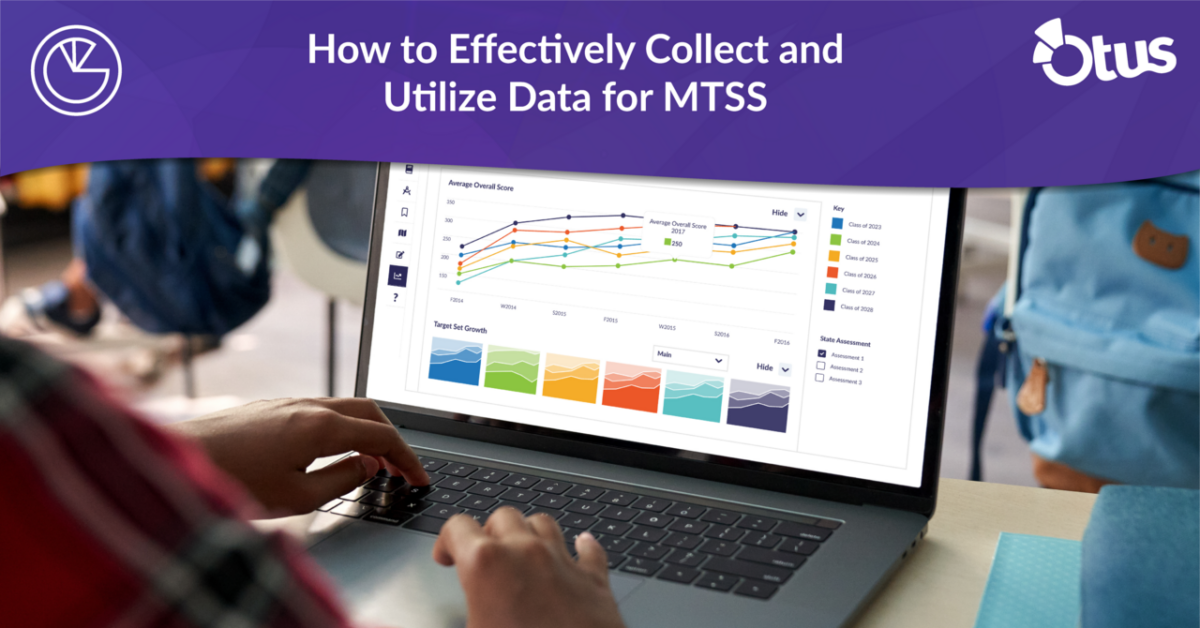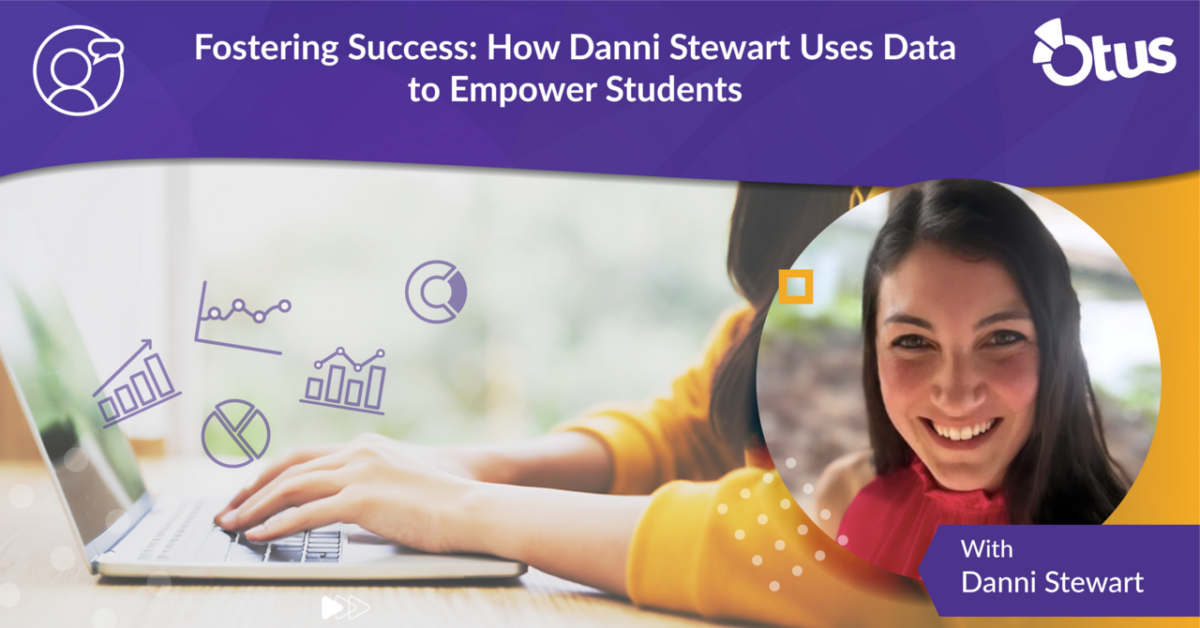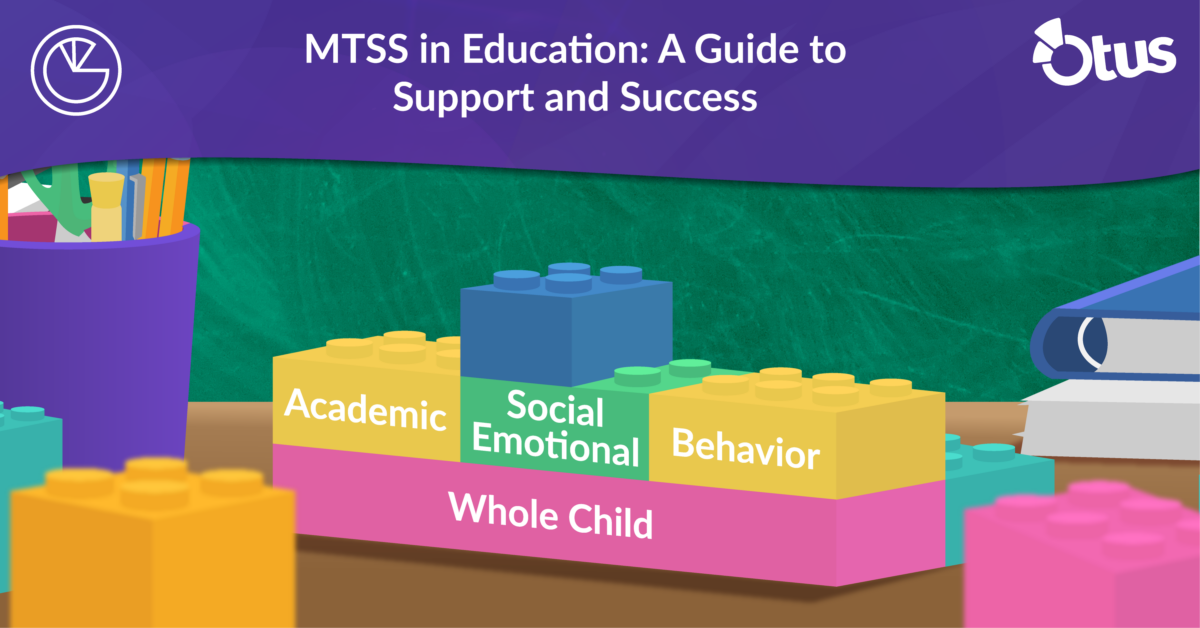Switching to Standards-Based Grading (SBG) is a big step for any school, and it’s normal to have lots of questions about it. In this post, we’ve compiled the most common questions educators ask when making this change. By answering these, our goal is to make you feel more informed and confident about moving to SBG. Understanding SBG better can help ease the transition and improve your school’s grading approach, making it clearer and more focused on student learning. Let’s dive into it!
1. Why Are Schools Shifting to Standards-Based Grading (SBG)?
Schools are moving to SBG because it gives a real look at what students learn. Instead of just giving grades for homework or tests, SBG shows which specific areas students understand and where they need more help. This makes it easier for teachers to teach more effectively and for students to get the help they need.
For example, in SBG, a student might get feedback saying they’re great at solving equations but need to work on geometric proofs, giving clear guidance on what to focus on next.
2. How Does SBG Work with Different Assessments?
SBG fits well with big tests like state and national exams because it breaks down learning into clear goals. This helps teachers see exactly where students are doing well or struggling. It’s like having a detailed map of each student’s learning journey, which is great for planning lessons and helping students get ready for these important tests.
For instance, a teacher might notice several students struggling with a particular math standard, prompting targeted review sessions before the state exam.
3. What Should Progress Reports Look Like in SBG?
In SBG, progress reports are more detailed. They tell you how well a student is doing in each specific area they’re learning. This is great for parents and students because it shows not just how much they’ve learned, but what they need to work on next.
A progress report in SBG could reveal, say, a student’s strong performance in creative writing alongside a need for improvement in analytical essays, offering targeted areas for focused teaching and learning.
School districts that use Otus to track student progress towards standards can generate standards-based report cards or progress reports that can be printed and shared with families. Click here to take a look at an example.
4. Is ‘Exceeds Expectations’ a Good Thing in SBG?
Having an ‘Exceeds Expectations’ level can be really motivating for students. It’s a way to show when students are doing more than just the basic requirements. But, it’s important to make sure everyone knows what ‘exceeding’ means so it’s fair and clear.
For instance, a student who not only masters a science concept but also applies it in a novel experiment could be rated as ‘Exceeding Expectations’.
5. How Does SBG Affect Top Students’ Chances for College?
Even though SBG might seem different, colleges understand it. They know that SBG grades give a clearer picture of a student’s skills and knowledge. This can actually help students stand out in college applications because it shows exactly what they’re good at.
Imagine a student’s SBG report highlighting their advanced mastery in calculus; this would stand out as a significant asset in their college application, underscoring their specific academic strengths.
6. How Can We Include Skills Like Leadership in SBG?
In SBG, you can also grade skills like teamwork or communication. First, you set clear standards for these skills. Then, assess them in class activities or projects. This way, students get feedback on important life skills, not just academic subjects.
For instance, in a group project, students could be assessed on their collaboration and leadership skills, based on how effectively they work and communicate with their peers.
7. How Does SBG Work with Special Education Students?
SBG can be great for students with special needs. It lets teachers tailor learning to each student’s IEP goals. This personalized approach means students can work at their own pace and focus on their own learning targets.
Consider a scenario where a student with an IEP has tailored reading standards. Their learning journey is then assessed against these customized benchmarks, ensuring progress tracking is aligned with their individual needs.
8. How Can We Convert Between Traditional Grades and SBG Scores?
Transitioning between traditional grading and Standards-Based Grading (SBG) scores can be a two-way process. To convert traditional grades into SBG scores, each test question is linked to a specific learning goal or standard. Students are then assessed based on their understanding of each standard, focusing more on their mastery of the material rather than just the total number of correct answers. For instance, in a history test about World War II, questions would be evaluated based on the student’s understanding of each relevant historical standard.
Conversely, turning SBG scores into traditional letter grades involves methods like the Marzano Scale or Logic Rule. These methods evaluate a student’s performance on each standard and aggregate these into a traditional grade. A student who consistently meets expectations across various standards might, for example, receive a ‘B’ grade in a traditional system. This reflects a solid overall understanding, even though the assessment was conducted in a more nuanced and standard-specific manner.
The most important thing is to make sure that grades really show what students have learned and match what your school believes in teaching. This method needs careful planning, but it helps mix SBG with traditional grades. This way, you can benefit from the unique features of SBG and still meet the usual grading needs.
Tools like Otus streamline the conversion process, automatically translating traditional points-based scores into standards-based performance levels, and vice versa. This allows teachers to focus on assessing students, while the program handles the grading conversions.
9. How Can We Get Everyone On Board with SBG?
Getting everyone excited about SBG involves showing how it benefits students. Training and support for teachers are key. Sharing success stories and celebrating when students do well can also help everyone see the value of this approach.
For example, sharing another school’s success story or a case where a student’s understanding improved dramatically under SBG can help staff see its practical value and effectiveness.
10. What Can Schools Do When Their SIS Doesn’t Support SBG?
When a school’s Student Information System, or SIS, isn’t set up for SBG and is limited to a traditional 100-point scale, it can be challenging to implement SBG. One solution is to look for software add-ons or third-party tools that can integrate with the existing SIS to enable SBG.
Otus integrates with your existing Student Information System so all teachers, students, and rosters are automatically loaded into the platform. Educators can then administer and track student progress toward standards using Otus assessments, and the results will automatically populate the Gradebook – which can be set up as points-based, standards-based, or both.
The Otus Standards Gradebook organizes student progress by learning standards so educators can look at each standard measured and all of the assessments that have been aligned to it. This provides a holistic view of growth that a traditional gradebook lacks when organizing progress by assessment or assignment.
For schools not yet prepared to switch Gradebooks, Otus offers a convenient solution by sending student assessment scores straight to your Student Information System. This prevents teachers from having to input data in several locations. As a result, teachers can focus on applying best practices and using learning standards in their instruction, while families still have the convenience of accessing grades through your existing Student Information System.
To learn how Otus can support your school or district with standards-based grading, request a demo!

